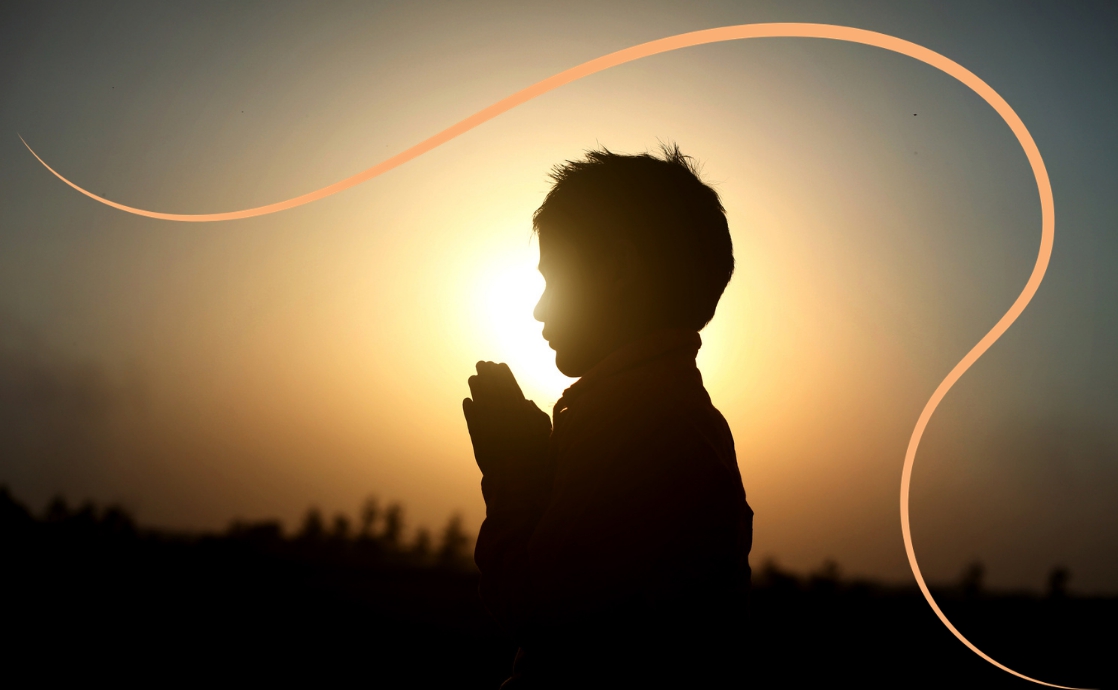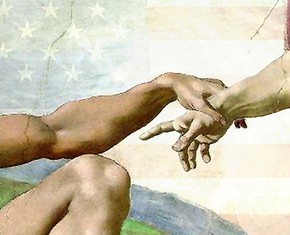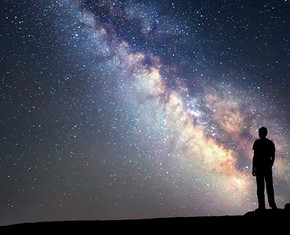The views expressed in our content reflect individual perspectives and do not represent the authoritative views of the Baha'i Faith.
It may be that when you enter a Hindu home you discover some representation of a blue man or blue boy — if so, that blue character is probably Krishna, whose name literally means black or dark blue.
The blue man, whether he stands for Krishna or Vishnu, the “supreme living being” for some Hindus, is a sign that the family are Vaishnavites and that their word for the Supreme God is Vishnu, who periodically appears to guide humanity through various appearances, known as avatars, of which Krishna is the best known.
In essence, this corresponds to what Baha’is know as progressive revelation — the inter-relatedness of the founders and prophets of all Faiths.
In the Itihasas and Puranas, Krishna is portrayed in many ways: When young he is depicted as a playful, mischievous child — often seen eating butter. As he gets older, he is presented as a cowherd and a talented lute player attracting many followers — especially young females (gopis). As a man, but never an old one, Krishna is portrayed as extremely handsome and full of compassion and wisdom. Often, he carries or wears a peacock feather, a sign of beauty; or a lotus, a sign of purity and transcendence, rising as it does out of dark water. He may also have a conch shell, through which Aum the primordial sound arose; or a disc, a symbol of mind; or a mace, a symbol of power. Sometimes he may be seen with his consort Radha.
Krishna is one of two main characters in the Bhagavad Gita, along with Arjuna. Both the Guardian of the Baha’i Faith and the Baha’i Universal House of Justice reference the Bhagavad Gita. The Gita tells the story of a prince, Arjuna, who is called to the battlefield of Kurukshetra (about 100 miles north of New Delhi) for an unpleasant duty: making war upon a related royal family because of their transgressions against Arjuna’s family. Arjuna hesitates in his duty to go to war as it will mean death to many friends and relatives on both sides. Before the battle, Arjuna turns to his charioteer for guidance, who is none other than Krishna.
No one really knows if that battle and these characters are historical. Certainly, many Hindus understand them that way, and there are reasons to believe that the events did occur a long time ago. Using astronomical and meteorological signs in The Mahabharata, scholars believe that the battle may have occurred around the year 3000 BCE. Another line of evidence comes from Greeks who visited India. Both Megasthenes (circa 350 – 290BCE) and Pliny the Elder (23 – 79 AD) travelled to India and both spoke of an Indian named Heracles who was held in special honor in Indian towns. Many scholars believe this “Heracles” is a slight alteration of an invocation used for Krishna, Hare Krishna. As the Greeks indicated that this Heracles lived 138 generations before the time of Alexander the Great, this translates to about 3000 BCE. In addition, archeological evidence indicates the presence of a “kingdom” near where the alleged battles took place.
RELATED: How Yoga Began: The Many-Armed Dancing Shiva
Regardless of the historical basis of the Bhagavad-Gita, it is a dazzling condensed gem of theology and religious instruction. It defines God, explains his appearances on Earth as avatars, identifies the cause of sin, and details methods millions of people employ for spiritual progress.
For example, Chapter Three explains what drives a man to sin: “It is desire, it is aversion born of passion.” Desire, the verses say, “works through the senses, the mind, and reason, and with their help destroys wisdom and confounds the soul.” Thus, to progress spiritually, Krishna explains to Arjuna, you must “first control your senses, and then slay desire; for it is full of sin and is the destroyer of knowledge and wisdom.” To control the senses you need a higher power, the verses explain: “… beyond [more powerful than] the senses is the mind, beyond mind is intellect, and beyond intellect is He [God].” Thus, to conquer desire you must rely on God. This venerable formula exists in every Faith, including the Baha’i teachings, as explained in The Gems of Divine Mysteries by Baha’u’llah:
O My brother! Forsake thine own desires, turn thy face unto thy Lord, and walk not in the footsteps of those who have taken their corrupt inclinations for their god, that perchance thou mayest find shelter in the heart of existence, beneath the redeeming shadow of Him Who traineth all names and attributes.
Chapter Four of the Bhagavad Gita explains that God appears among us when we need guidance: “When spirituality decays and materialism is rampant.” He comes to “protect the righteous, destroy the wicked, and to establish the Kingdom of God.” The words reflect the sentiment of Jesus who asked us to pray: “Thy Kingdom Come.”
Chapter Six explains that everything must be done for God, not for earthly reward. It describes a timeless method of meditation: sitting alone and motionless, with mind stilled, “the student [must] lose Himself in contemplation of Me [God].” “Keeping his mind always in communion with me, and with his thoughts subdued, he shall attain that Peace which is Mine and which will lead him to liberation at last.” Thomas Merton, a Catholic monk famous for his teachings on prayer and meditation, would concur, as did Abdu’l-Baha, who said in a talk he gave in Paris:
Baha’u’llah says there is a sign (from God) in every phenomenon: the sign of the intellect is contemplation and the sign of contemplation is silence, because it is impossible for a man to do two things at one time – he cannot both speak and meditate.
It is an axiomatic fact that while you meditate you are speaking with your own spirit. In that state of mind you put certain questions to your spirit and the spirit answers: the light breaks forth and the reality is revealed.
RELATED: God Within: Meeting Your Hindu Neighbors
In Chapter Six, the Bhagavad Gita helps show us that it is essential to see God in everyone. Krishna states:
He who experiences the unity of life sees his own Self in all beings and all beings in his own Self, and looks on everything with an impartial eye;
He who seeks Me in everything and everything in Me, him shall I never forsake, nor shall he lose Me.
The sage who realizes the unity of life and who worships Me in all beings, lives in Me, whatever may be his lot.
O Arjuna! He is the perfect saint who, taught by the likeness within himself, sees the Self everywhere, whether the outer form be pleasurable or painful.”
This message comes from Krishna in the Bhagavad Gita, but it could have come from Siva, the Devi, or from any of a great number Hindu gods and goddesses in the Vedas, Puranas, or the Itihasas (epics). It could also have come from Jesus, and if it is understood that the “Me” above represents God, it could have been instruction given by Moses or Muhammad to their followers. It means seeing God in everyone, no matter the outer form, and it remains one of the principal tasks before us all, as expressed by Abdu’l-Baha in Some Answered Questions:
When we examine the world and the souls of men, the perspicuous signs of the perfections of the Divinity appear clear and manifest, for the realities of things attest to the existence of a universal Reality. The reality of the Divinity is even as the sun, which from the heights of its sanctity shines upon every land, and of whose radiance every land and every soul receives a share.
Chapter Seven of the Bhagavad Gita explains that God is the “very Life which sustains the universe;” “the womb of all being;“ the Agent “by whom the worlds were created and shall be destroyed;” “the Fluidity in water;” the “Light in the sun and the moon;” the “Fragrance of earth;” the “the Brilliance of fire;” the “Life Force in all beings;” and “the eternal seed of Being.” That understanding of our Creator holds true across all Faiths.
















Comments
Sign in or create an account
Continue with Googleor